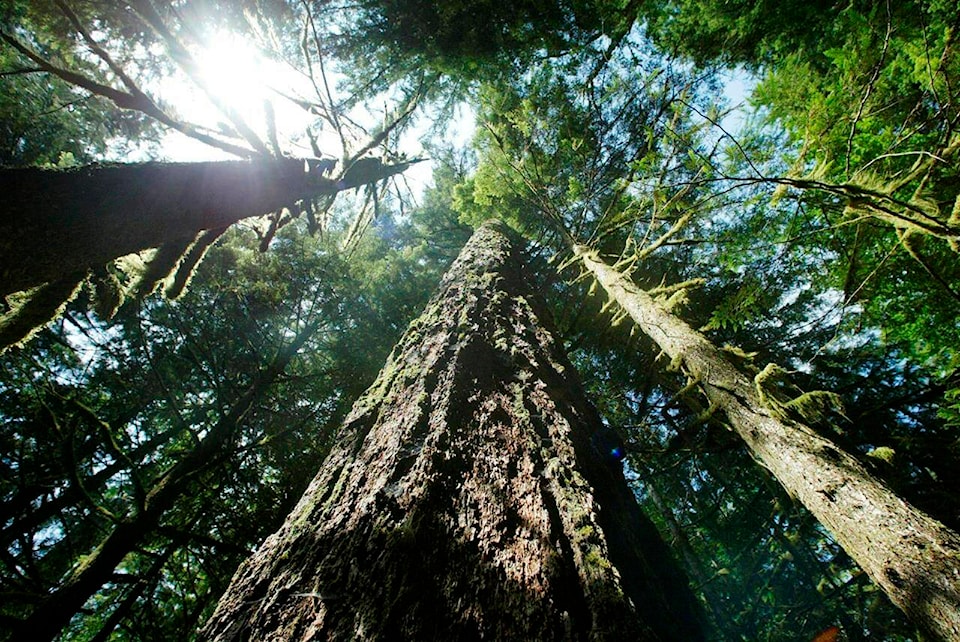Local government officials are worried that the Ministry of Forests can’t count trees very well, but still wants to ban forestry in some places.
If you’re going to set aside forest-land for future generations, it had better be the right land, Ministry of Forests personnel were told by Regional District of Bulkley Nechako (RDBN) directors at a recent public meeting.
Canada is on board with a global desire to protect 30 per cent of its land-base by the year 2030, to ensure ecosystem health permanently. This is dubbed the “30 by 30” initiative.
British Columbia is underway with consultations, which came to the RDBN directors’ table in March and has resulted in a number of meetings since then, including on April 18 in Burns Lake and during the recent Council Of Forest Industries conference in Prince George, among other settings.
The issue is complex, said forestry officials, who are leading the conversation due to so much economic impact across B.C. being tied to landscape protection. This province already has a large amount of landscape protected by parks or old-growth harvesting deferrals, but more will have to be set aside.
“I don’t think we’re going to have to strive too hard to hit the 30 per cent (due to the amounts of forest already protected), but there will be some reductions (in some local Timber Supply Areas),” RDBN officials were told by Albert Nussbaum, executive director of the Office of the Chief Forester, and deputy chief forester for the province.
He was one of a delegation to present the 30 by 30 concept, among other forestry topics, to the RDBN. Also involved in the dialogue were Lori Borth (regional executive director of the Ministry of Forests’ Omineca Region), Beth Eagles (district manager for the Nadina Natural Resource District), and Yvonne Parkinson (old growth lead for the ministry’s north area).
Picking areas to protect won’t be easy, the conversation revealed, because communities are already short of merchantable timber for sawmills, and the ways of picking protection areas has been highly inaccurate, even in the very recent past when old-growth areas were being sought for protection.
“Is there a plan to do those inventories better?,” said Vanderhoof mayor Kevin Moutray. “I know in Vanderhoof we went to, if you’re familiar, the NVSA (Nechako Valley Sporting Association) grounds, there is a polygon around those, and we went looking for old-growth trees in there and there’s just nothing there.”
Fort St. James Rural director Judy Greenaway said their community had some old-growth mapping done two years ago. “They gave us a crazy map that didn’t align with anything that was out there,” she said.
“I just want to make sure that we all understand the frustration with the last mapping that was done,” said Fraser Lake mayor Sarrah Storey, “because when we talk about old-growth here, it looks a lot different than old-growth on the Island or coastal communities. What can we do to make sure it’s done properly? Because that’s going to be the real ask from most of us, because we don’t want to see the mapping done wrong.”
Parkinson said the accurate mapping concern was “an excellent point, and this is a huge opportunity to improve our inventories, which is Recommendation 11 of the Strategic Review.”
Nussbaum added “That is a constant challenge, we are always working on that, and there are new technologies that are coming into play.” He cited advancements in LiDAR scanning (a laser imaging technique), in particular, but that has not yet been funded on a province-wide basis.
Francois Ootsa Rural director Clint Lambert asked if 30 by 30 protection would end up excluding livestock grazing, which can currently happen on Crown forest land. The forestry officials were unsure, but marked that lack of information.
Lambert also expressed concern over the shortage in timber already, in the Central Interior region, due to the pine beetle disaster and massive wildfires, so how would the 30 by 30 protection zones be allocated across the landscape. Some regions already had much protection while others had relatively little.
Albert said that was not yet determined, but each area should expect to feel some protection pressure.
“In areas that are already well protected (by old-growth deferrals or parkland, for example), those are probably safer than ones that aren’t,” he said, but stressed that no decisions on that had been made because the consultation process was only now underway, and no directives had been ordered by government on that topic.
“I just don’t think there has been enough consultation with communities,” said Greenaway, as a general statement on past Ministry of Forests practices, as a warning that the 30 by 30 process ought to do better.
Eagles responded that “One message we are clearly hearing from local government and from First Nations and from industry is that we need local solutions. It’s all well and good for government, as we do, to come up with province-wide policies, but we really do need the local communities, the local people, to provide input. It is my hope that when you see the Old-Growth Action Plan, it will have a lot of flexibility for communities.”
Borth added, “We’ve heard clearly that mapping isn’t adequate and transition plans are so important for local communities, loud and clear.”
It was expected, directors and RDBN staff were told, that framework document would likely be released sometime in the next few months and an action plan was hoped for by the end of 2023.
